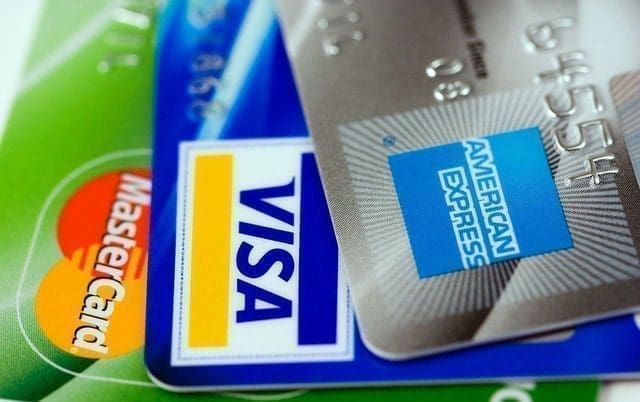Mastering the Fine Print: A Firefighter’s Guide to Credit Cards
With the rate of inflation going up all the time, the money that we were making that was giving us a comfortable living, is no longer feeling very comfortable. It is very easy to fall into the trap that a credit card can be the answer to all of our problems. Credit cards are a tool that can make or break us!
Today, we’re diving into the world of credit cards and unraveling the fine print to ensure we make informed decisions. Understanding the terms and conditions of credit cards is crucial, as it helps us to maximize benefits while avoiding potential pitfalls. So, let’s get into it.
Choosing the Right Credit Card:
It’s important to keep in mind that you deserve a credit card that caters to your unique needs. When I’m on the lookout for credit cards, I like to get them from companies that support firefighters and veterans. However, that’s just me. Check out this article I wrote about my top 3 credit card companies that cater to firefighters and first responders. I’m comparing features like cashback programs, travel rewards, and insurance benefits. I’m paying attention to interest rates, annual fees, and the issuer’s reputation for good customer service. Nothing irritates me more than when I want to speak to someone, and either I get stuck talking to a machine, or I keep getting transferred. It’s all about finding the card that suits me best.
Key Terminology and Definitions:
Before we dive deeper, let’s decipher some credit card jargon. You want to familiarize yourself with terms like credit limit (the maximum amount I can borrow), APR (annual percentage rate), grace period (time before interest kicks in), and due date (when my payment is due). Know all about what minimum payments will cost you, late payment fees, balance transfers, cash advances, and those sneaky foreign transaction fees. I truly believe everything has some kind of hidden cost, so it’s important that you find that information out.
Understanding Interest Rates and Fees:
Interest rates can be a bit tricky. I want to be clear that I am not a financial expert, but there are some things I’ve learned to watch out for. There are different types of APRs, such as purchase APR (for regular transactions), balance transfer APR (for moving debt from one card to another), and cash advance APR (when I withdraw cash from my card). I like to keep an eye out for enticing introductory APRs and promotional offers, but it’s important to be aware of penalty APRs and the consequences of defaulting (more hidden fees of course).
Credit Card Rewards and Benefits:
Let’s talk perks! Many credit cards offer rewards and benefits. I’m looking for cashback programs that give me a percentage of my purchases back into my pocket. I like to travel, So I like to consider cards with travel rewards and airline miles. Some cards have points-based systems where I earn points for each purchase. And I won’t overlook the value of insurance and protection benefits, such as purchase protection or rental car coverage. Again, I don’t really rent cars, so that’s something I probably won’t be using anytime soon.
Reading and Interpreting Terms and Conditions:
Ah, the fine print! Credit card agreements may seem intimidating, but with a little patience, you can break them down. I’ll start by getting an overview of the agreement. I’ll locate and understand important sections, like fees, interest rates, and dispute resolution. I’ll pay close attention to disclosure statements—they provide valuable information. If anything seems unclear, I’ll reach out to the card issuer for clarification. Remember, knowledge is power, and don’t sign or accept anything until you understand EVERYTHING.
Enhancing Credit Card Security:
Protecting your credit card information is paramount. I’m sure you already know this. Keep it safe by not sharing it unnecessarily and avoiding sketchy websites. I’ll regularly monitor my statements for any signs of fraudulent activity. When I say regularly, I really mean once in a great while if I’m being honest. I’ll report lost or stolen cards quickly to my issuer if I run into that. I’ll take advantage of security features like two-factor authentication and fraud alerts to add an extra layer of protection to my finances.
Seeking Assistance and Support:
Remember, you don’t have to navigate this credit card journey alone. If you have questions or concerns, reach out to your credit card issuer’s customer service—they’re there to help, at least they better! Additionally, there are plenty of online resources and educational materials available. Youtube is an excellent resource for information, but If you need more personalized guidance, consider consulting a financial advisor or credit counseling service. They can provide tailored advice based on your specific circumstances. If this sounds like you, looking for the same type of guidance from a financial advisor can be a great help.
Conclusion:
I hope this article has provided you with a comprehensive guide to understanding credit cards and navigating their fine print. By choosing the right card, familiarizing yourself with key terminology, grasping interest rates and fees, and leveraging rewards and benefits, you can make informed decisions and maximize your credit card experience. Remember to practice responsible credit card usage, enhance security measures, and seek assistance when needed. Armed with this newfound knowledge, you can confidently manage your credit cards, reap the benefits, and protect your financial well-being.
Check out these related articles:
Smart financial management for firefighters
Top 3 credit cards for firefighters
A comprehensive guide to credit cards





